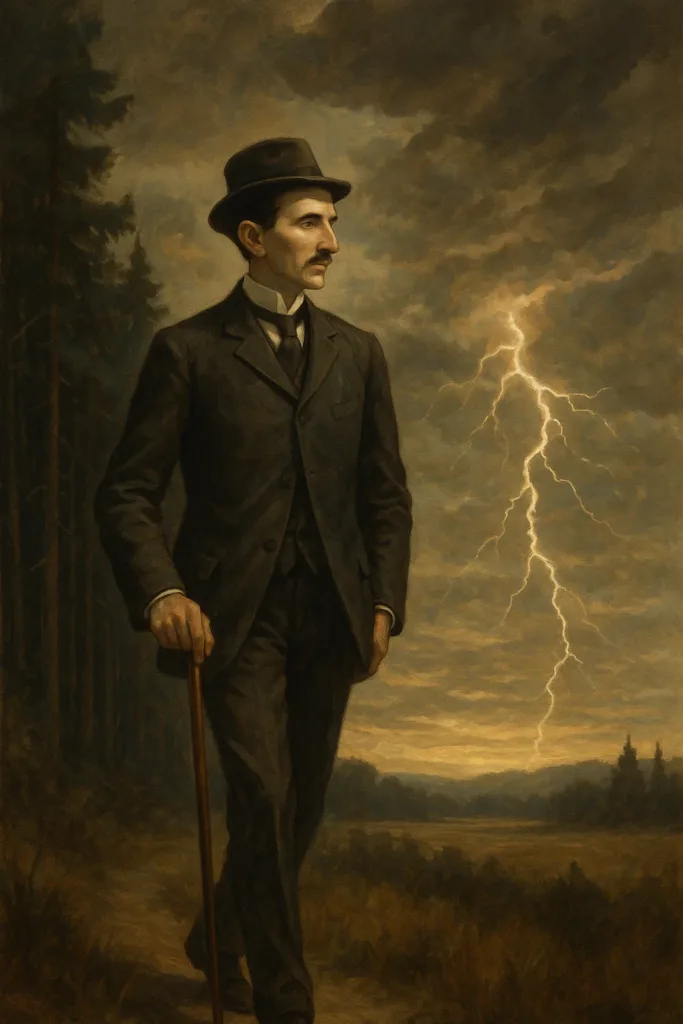In his autobiography My Inventions (1919), Nikola Tesla described a mysterious thunderstorm that inspired him to believe that time and atmospheric phenomena could be controlled using electrical impulses. His observations were revolutionary, yet controversial—some see them as the foundation of modern theories on geoengineering and projects like HAARP.
Tesla and the “command signal” of thunder
Tesla wrote in My Inventions:
“The thunder acted like a signal, as if some invisible hand was sending a message through the atmosphere. I realized that electrical vibrations might be the key to controlling the forces of nature.”
Key ideas from Tesla’s reflections:
- Resonance and frequency – Tesla believed that atmospheric phenomena (storms, lightning) could be triggered or controlled using precisely tuned electromagnetic waves.
- “Weather devices” – He envisioned high-frequency transmitters that could communicate with the ionosphere, resembling today’s ionospheric heaters like HAARP or the Russian Sura project.
- Energy from the air – He claimed that the atmosphere was a free energy source—if captured in the right resonant mode.
Did Tesla patent weather control devices?
Although there are no patents directly titled “weather control,” several of Tesla’s works contain elements of this idea:
- Patent US 1,119,732 (1914) – “Apparatus for Transmitting Electrical Energy”
Describes wireless energy transmission through the Earth and the atmosphere. Some interpret this as a foundation for potential atmospheric modification. - Patent US 787,412 (1905) – “Art of Transmitting Electrical Energy Through the Natural Mediums”
Refers to the use of the Earth’s natural frequencies (like Schumann resonance), which are still referenced in modern theories about how HAARP might work. - Wardenclyffe Tower (1901–1917)
Originally designed for wireless energy transmission and communication, but some researchers speculate it had hidden purposes—like influencing weather or military applications, as suggested by declassified FBI documents after Tesla’s death in 1943.
What did the FBI hide in Tesla’s archives?
After Tesla’s death, the FBI seized his notes citing “national security.” Some documents were declassified decades later, revealing some of his most controversial ideas:
- “Dynamic theory of gravity” – Tesla believed electromagnetism held the key to controlling gravity—and possibly time.
- “Death ray” – Possibly not just a weapon, but a system for emitting high-frequency energy into the atmosphere.
- Notes on “resonant destruction” – The FBI labeled them “potentially dangerous to national security.”
HAARP and Tesla’s inspiration
HAARP (High-frequency Active Auroral Research Program) uses high-frequency radio waves to study the ionosphere. Its operating principles closely resemble Tesla’s ideas about electromagnetic influence on the atmosphere. While some claim HAARP can cause earthquakes or extreme weather, mainstream science firmly denies such capabilities.
Did Tesla believe he could control the weather?
Yes, but not in the way conspiracy theories suggest. Tesla did not imagine creating hurricanes on command—rather, he envisioned a harmonious influence of electromagnetic vibrations on natural forces. His philosophy was more in tune with nature than against it.
Conclusion: Tesla as a visionary
While there’s no evidence that Tesla ever built an operational “weather machine,” his ideas about resonance, wireless energy transmission, and atmospheric influence remain increasingly relevant in an era of climate change and geoengineering. Projects like HAARP, climate engineering, and wireless energy transfer all draw, directly or indirectly, from Tesla’s legacy.
MilovanInnovation continues its Tesla series.
In the next installment, we’ll explore Tesla’s pioneering work in teleautomation—early forms of remote control that laid the foundation for the Internet of Things (IoT), drones, and autonomous systems.


Leave a Reply